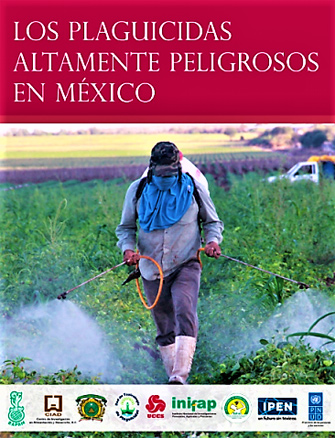In the Culiacán Valley, Big Ag serves up deadly brew of chemicals

CULIACÁN
As phytosanitary requirements for large-scale commercial agriculture increase, so does the use of pesticides, insecticides, fungicides and other chemical substances that prevent the presence of bugs, improve the appearance of the goods and raise their prices.
In the Valley of Culiacán, 63, or more than half of the 118 agricultural pesticides that were used in 2011-2012, classified as Highly Hazardous Pesticides (HHPs), according to the Pesticide Action Network (PAN). They constituted approximately 69.92 tons of active ingredient for the period.
Amounts have accumulated over the years, according to an HHP study by researchers José Belisario Leyva Morales, Irma E. Martínez Rodríguez, Pedro de Jesús Bastidas-Bastidas and Miguel Betancourt Lozano.
The use of pesticides is widespread in the state of Sinaloa. Endosulfan, imidacloprid, abamectin, zineb, mancozeb, methomyl and chlorothalonil, applied in the centrally located Culiacán Valley, also are used in the agricultural areas in the southern part of the state.
Other HPPs reported in the Culiacan Valley include methamidophos, zeta-cypermethrin, lambda cyalotrine, chlorpyrifos ethyl and pymetrozine, which also are used in the northern part of the state around Guasave (Irrigation District 063), where benomyl and atrazine was traced, possibly to corn, which is the predominant crop there.
In the Carrizo Valley, also in the northern part of the state, the use of deltamethrin, endosulfan, fluazifop-p-butyl, methomyl, chlorpyrifos ethyl, methyl parathion, dimethoate, carbaryl, cypermethrin and methamidophos was recorded in 1997-1998, all coinciding with HHPs identified in the Culiacán Valley.
The agricultural district around the city of Culiacán is the most economically important and is considered the engine of growth in the northwestern region of Mexico, due to mechanization on 217,461 hectares of irrigated land and 115,653 hectares of dryland, producing around 800,000 tons of vegetables for export, as well as grains.
According to the study published in the book Highly Hazardous Pesticides in Mexico, coordinated by Fernando Bejarano, of the Mexican Action Network on Pesticides and its Alternatives in Mexico (Rapam), the Culiacán Valley is composed of eight municipalities with a population of more than 1.25 million people in the year 2010.
The municipalities are Salvador Alvarado, with a population of 79, 085, Angostura with 44,993 people, Mocorito with 45,847, Badiraguato made up of 29,999 residents, Navolato with 135, 603 inhabitants , Culiacán with 858, 639, Elota with 42,907, and Cosalá with 16,697.
These people face not only the application of agrochemicals in the Sinaloa fields, but also the inadequate handling of used chemical containers. A collection center covering an area of 280,000 hectares receives some 66 percent of the containers, the research established. The rest end up littered across the land or in the rivers.
The compilation of works, published in 2017, explains that the general term agrochemicals includes toxic substances that are called insecticides when aimed at insect control, fungicides when dealing with fungi, or herbicides in the case of undesirable plants -- among the most widespread uses.
On content and coverage, it states: "In this report we refer to chemically synthesized agrochemicals that, due to their particularly dangerous characteristics, can cause damage to health and the environment, in the short or long term, for which some are part of international environmental agreements and many are prohibited in other countries, although they are authorized in Mexico ".
The authors recommend establishing strategies aimed at substituting this type of compounds for pest control alternatives less harmful to both the environment and human health.
